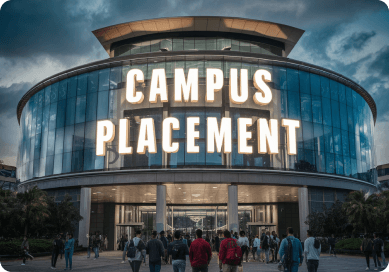Enter OTP



Stuttgart, Germany

Stuttgart, Germany

Cost Of Living

Post Graduate Fees International Students

The University of Stuttgart’s unique strength lies in its “Stuttgarter Weg” – a distinctive interdisciplinary approach combining engineering, natural sciences, humanities, and social sciences. This model encourages collaboration across departments and focuses on solving complex, real-world problems. The university is especially renowned for technical excellence, making it a hub for engineering, architecture, automation, aerospace, and computational sciences. Its location in Baden-Württemberg, one of Europe’s top industrial regions, places students right at the heart of Germany’s innovation ecosystem, creating unmatched exposure to applied research and real-time industry challenges.
Gottlieb Daimler (1834–1900) studied at the University of Stuttgart from 1857 to 1859, where he gained foundational sk... View More
Gottlieb Daimler (1834–1900) studied at the University of Stuttgart from 1857 to 1859, where he gained foundational skills in mechanical engineering and technical drawing. He went on to co-found Daimler-Motoren-Gesellschaft and invented the high-speed internal combustion engine, which played a pivotal role in launching the automotive era—earning him recognition as "The Inventor of the Automobile." View Less
Wilhelm Maybach (1846–1929) was a pioneering engineer and alumnus who collaborated closely with Daimler. He joined Dai... View More
Wilhelm Maybach (1846–1929) was a pioneering engineer and alumnus who collaborated closely with Daimler. He joined Daimler in Cannstatt in 1882 and developed groundbreaking engine designs, including the first horizontal and vertical-cylinder engines and the iconic Mercedes radiator. His innovations laid the groundwork for early Mercedes vehicles, earning him an honorary doctorate from the University of Stuttgart in 1916. View Less
Ulf Merbold (b. 1941) received his diploma in physics in 1968 and a doctorate in 1976 from Stuttgart. He became the fi... View More
Ulf Merbold (b. 1941) received his diploma in physics in 1968 and a doctorate in 1976 from Stuttgart. He became the first ESA astronaut on a U.S. space shuttle mission in 1983 and flew on the Russian Mir station in 1994—making history as the only German to travel into space three times. He has been honored with numerous awards, including the Order of Merit of the Federal Republic of Germany. View Less
Horst Störmer (b. 1949) earned his PhD at Stuttgart in 1977 with a thesis on electron-hole droplets in magnetic field... View More
Horst Störmer (b. 1949) earned his PhD at Stuttgart in 1977 with a thesis on electron-hole droplets in magnetic fields. He later joined Bell Labs and, together with colleagues, discovered a new quantum fluid—the fractional quantum Hall effect—which led to him receiving the Nobel Prize in Physics in 1998. View Less
Rolf‑Dieter Heuer studied physics at the University of Stuttgart before joining CERN in 1984. He played a key role in ... View More
Rolf‑Dieter Heuer studied physics at the University of Stuttgart before joining CERN in 1984. He played a key role in developing large particle detectors and served as CERN’s Director-General from 2009 to 2015. Under his leadership, CERN achieved significant milestones such as the discovery of the Higgs boson in 2012. View Less
The University of Stuttgart operates two main campuses—Campus Vaihingen and Campus Stadtmitte. The infrastructure is modern and highly research-oriented, featuring advanced laboratories, simulation centers, and tech-driven lecture halls. Vaihingen, the larger campus, houses faculties of engineering, computer science, and natural sciences, while Stadtmitte is home to architecture, humanities, and management departments. Both campuses are well-connected via public transport and offer fast internet, co-working zones, and maker spaces.
Student life at the University of Stuttgart is vibrant and diverse. With over 27,000 students from more than 100 countries, the campus atmosphere is international and inclusive. Events such as Campus Beach, International Dinners, and University Summer Festival keep the social scene active. There are numerous cafés, a large Mensa (canteen), and hangout spots across campus for students to relax and network.


The Career Center of the University of Stuttgart offers tailored services like resume workshops, interview training, internship placement, and company networking events. Students benefit from direct connections to major employers like Bosch, Daimler, and Siemens. The StepIn Career Fair, IT-Kontaktmesse, and bonding fair are standout recruitment events that bring companies onto campus.
The below information is required while
completing the university application :
Higher Secondary School Certificate: Must be equivalent to the German “Abitur” (e.g., IB, A-Levels, or Indian HSC + 1 year university).
University Entrance Qualification: Proof of eligibility for German universities, often via uni-assist or DAAD guidelines.
German Language Proficiency:
Most bachelor's programs are in German.
Requires TestDaF (4x4), DSH-2, or Goethe-Zertifikat C2.
Know moreThe University of Stuttgart has a strong emphasis on career-oriented education and fosters active ties with industry leaders across Germany and Europe. Through its Career Center, students receive support in CV building, interview preparation, and job placements. Several renowned companies like Bosch, Daimler, Porsche, Siemens, and SAP participate in on-campus recruitment drives, internships, and research collaborations. Engineering, computer science, and business students especially benefit from direct industry integration through thesis projects and cooperative education formats like Studium mit vertiefter Praxis (study with intensive practice). Alumni networks and company fairs help bridge students directly to recruiters.



The University of Stuttgart has consistently ranked among Germany’s top technical universities and is part of the prestigious TU9 alliance – a group of Germany’s leading Institutes of Technology. It has contributed significantly to automotive, aerospace, and computational advancements, with its alumni playing leading roles in global industries. The university also has strong participation in European Union research projects and is regularly featured in QS and Times Higher Education global rankings. It has received accolades for its excellence in simulation technology, sustainable building concepts, and AI-focused initiatives through Cyber Valley.


In the 2023 QS World University Rankings, the University of Stuttgart was ranked #1 in Germany for Mechanical, Aeronautical & Manufacturing Engineering, reflecting its academic and industrial strength.
Researchers at the Institute of Space Systems participated in component testing for NASA’s Artemis Moon Missions, validating Stuttgart’s deep space research contributions at the international level.
The University co-founded Cyber Valley, Europe’s largest AI research cluster, alongside Amazon, Max Planck Institute, Bosch, and the State of Baden-Württemberg, making it a pioneer in artificial intelligence and machine learning.
Stuttgart became the host and founding member of ARENA2036, a world-leading research campus for future mobility and production technologies, in collaboration with Mercedes-Benz, Bosch, Fraunhofer, and DLR.
As part of Germany’s Excellence Initiative, the University of Stuttgart was awarded funding for its Cluster of Excellence: Simulation Technology (SimTech), boosting its global status in interdisciplinary computational science.
The University became one of the first institutions to lead multiple SFB (Sonderforschungsbereiche) research groups funded by the DFG, contributing to advanced research in simulation technology, cyber-physical systems, and material sciences.
The University of Stuttgart is a powerhouse for innovation, backed by over 150 research institutes and centers, including the High Performance Computing Center Stuttgart (HLRS) and the Institute for Lightweight Structures and Conceptual Design (ILEK). The university plays a central role in Cyber Valley, Europe’s largest AI research network. It has pioneered digital twin technologies, adaptive building materials, and renewable mobility prototypes. Researchers at Stuttgart are working at the forefront of quantum computing, robotics, smart cities, and environmental sustainability, with extensive collaboration between academia and industry, often funded by the German Federal Ministry of Education and Research (BMBF) and the EU’s Horizon programs.
The Institute of Industrial Manufacturing and Management (IFF) developed frameworks for digital twins in industrial applications. These are virtual models of real-world systems used in Industry 4.0, enabling predictive maintenance and process optimization.
As a key member of Cyber Valley (Germany’s leading AI research hub), University of Stuttgart helped develop robotic vision systems and explainable AI tools. Their Visual Computing Lab focuses on computer vision and 3D reconstruction, now used in autonomous systems.
ILEK developed adaptive, kinetic building facades that respond to environmental conditions (light, heat, wind). These structures are energy-efficient and showcase biomimetic design principles, merging architecture and mechanical engineering.
The University’s Institute of Vehicle Concepts developed solar race cars like the “SOLLVE” prototype. These were used in international solar car challenges and research into sustainable vehicle technologies.
Innovations in vehicle-track interaction and passenger comfort, including active suspension and track alignment optimization, came out of collaborative projects at the Institute for Railway and Transport Engineering (IEV).















Embark on your educational journey with confidence! Our team of admission experts is here to guide you through the process. Book a free session now to receive personalized advice, assistance with applications, and insights into your dream school. Whether you're applying to college, graduate school, or specialized programs, we're here to help you succeed.
